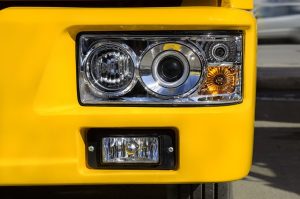 What Safety?
What Safety?
In an era where media outlets span from traditional newspapers and television to internet podcasts and beyond, there is a constant spotlight on the need for heightened safety measures across numerous domains of public life. Despite this pervasive coverage, a notable disconnect persists between the urgency communicated by these media sources and the tangible actions taken by governmental bodies to enhance safety protocols. This gap raises critical inquiries about the actual effectiveness of government intervention in safeguarding public well-being, painting a picture of a reactive rather than a proactive stance towards emerging safety concerns.
A particularly glaring example of this discrepancy is evident in the regulation of vehicle headlight standards. The last decade has witnessed a significant technological leap with the widespread adoption of LED headlights. These advanced lighting solutions offer a multitude of benefits, chief among them being their capacity to illuminate the road ahead with unprecedented clarity. This not only makes nocturnal driving more manageable but also potentially reduces the likelihood of accidents by granting drivers additional time to respond to unforeseen obstacles.
However, the introduction of LED headlights has also unveiled a series of unintended safety issues. The intensity and distribution of light emitted by these modern headlights can, under certain conditions, pose significant risks to oncoming traffic. Factors such as the vehicle’s design, including its height and the arrangement of its headlights, as well as environmental elements like the terrain’s contour, play a pivotal role in this dynamic. High-output headlights on vehicles like some configurations of the Ford F150, which feature an array of four potent lights, can cast a blinding glare on drivers in lower-sitting vehicles, impairing their vision. Moreover, the shift towards a daylight color spectrum with LED lights, while enhancing visibility for the driver using them, can be particularly jarring for oncoming drivers, disrupting their ability to see clearly.
Despite the accumulation of thousands of complaints lodged by concerned citizens, the response from federal regulatory bodies has been lackluster. This inertia prompts a broader contemplation about the state of vehicular safety standards and the government’s commitment to addressing such issues before they escalate into widespread hazards.
A similar safety concern arises in the context of highway driving under rainy conditions, especially when encountering large trucks. The phenomenon of trucks generating a wall of water spray can drastically reduce visibility for other drivers, creating precarious driving conditions. This issue is exacerbated by the dynamics of traffic flow and road design, particularly in regions with complex topographies where visibility is already compromised. The solution to this problem appears straightforward and cost-effective, as demonstrated by certain commercial fleets that have adopted spray-suppressant technologies. Yet, the absence of a regulatory mandate for such safety measures underscores a gap in governmental oversight.
The evolving landscape of the trucking industry, marked by a shift away from seasoned professional drivers towards a more varied demographic, further complicates the challenge of ensuring road safety. This trend highlights the necessity for a holistic approach to safety regulations, one that encompasses technological innovations, vehicle design, and driver education, especially in adverse weather conditions.
These instances underscore a critical need for a shift in how governmental bodies approach safety regulations. The current state of affairs, characterized by a reactive posture that waits for crises to unfold before taking action, is inadequate. As technological advancements continue to redefine the parameters of safe driving and as new challenges emerge, the question of “what safety?” remains ever pertinent. It is imperative for governmental agencies to adopt a more anticipatory stance, actively seeking out and addressing potential safety concerns to protect the public proactively.
Feel free to leave your comments below. We welcome all comments. You do not need to fill out any of your personal information in order to leave your comment.
In the 70’s regulations on head lights and taillights we very strict I built molds for both front and back on vehicles it seems that when China became involved with injection molding that’s when you started getting this glare or not being able to see tail lights clearly. Maybe they should go back to old regulations and it would help. Also people that add fog lights should be banned